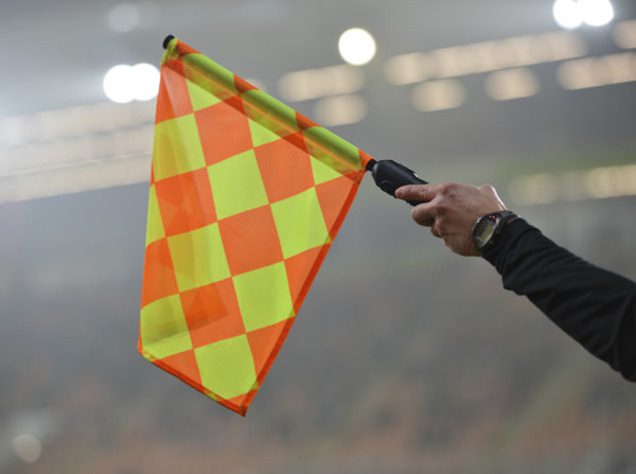How To Successfully Run The Offside Trap
In order to understand the offside trap, it’s important to know exactly what being offside is. A player is offside when he receives the ball in a position that is between the last defender and the goal. It’s an easy concept to grasp, but a complicated one to master. Defending fast players like Barcelona’s Lionel Messi and Neymar can be a complete nightmare– but imagine it without the offside rule. The speediest players would just run into space the second their team has possession of the ball. Even the best defenders wouldn’t stand a chance.
And thusly, the offside rule was born to make athletes adhere to an equal field of play.
To even further strategize against the strongest and fastest attacking teams, coaches developed the offside trap. The general idea revolves around the defensive back line working as one cohesive unit in a straight line. When one moves up, the rest follow suit. If successfully done, it allows the team to trap players universally on the wrong line of the line. But, if done incorrectly, a player may not step forward with the rest of his defenders which, in turn, allows a player to accidentally leave a player onside.
If it sounds complicated, don’t worry– it definitely is. But with focus, determination and effort, a team can learn the offside trap and help nullify a good portion of the opposing team’s attacks.
Above all, communication is the biggest skill in an offside trap. It requires a chatty, intelligent center defender. It is their responsibility to communicate with the back line. Here, they’ll decide whether or not to move up or step back as a group. Although these decisions must be made in a split second, the defenders must be able to move together as a group or it will be for nothing.
Often times, an attacking player will be marked by one particular player. A casual approach to drawing a player offsides will be made by that particular defender by stepping forward. By doing this, the attacking player is now in between the defensive player and the goal, theoretically putting him in an offside position. However, the problem is, more often than not, the other three defenders in the back line might still be playing him onside even if they’re not part of the play whatsoever.
If one player falters, the entire defense has failed. If one player fails, the miscommunication will often result in a goal. The offside trap is a game played in inches, not feet. So the communication must be read, analyzed, and executed in a moment’s notice.
If the opposing team makes a lot of long passes, it may be easier to successfully implement the offside trap against them. It will be somewhat obvious if they are about to make a long pass, thus giving the defense the time to step up for the trap. However, it will be harder to use the offside trap against teams who make short quick passes because they are harder to predict. It’s equally difficult for the defense to communicate when there is a lot of ball movement.
Checklist For A Successful Offside Trap
- Chatty, well-communicating center back
- A universally sound, fluid back four
- The ability to move as a cohesive unit
- The center back must be able to analyze the play developing in front of him and execute the trap in a flash.
- All defenders must move up at the exact, same instance or they may run the risk of a player on the opposite side of the pitch playing a striker onside accidentally.
- Avoid breakdowns in communication
Only play the offside trap with defenders that stay focused, don’t watch the ball and are always listening for commands from their center back. A sleeping, ball-watching defender is often the downfall of the trap. If a player loses focus for a second, that’s all it takes to ruin the trap and give up a goal, so be careful! Here, you’ll see a clear cut, perfect example of an offside trap. (Note: Siena is in white, AC Milan is in blue)
Pause the video at :19, this is when the referee has blown the whistle to restart play. Notice how all the blue jerseys are behind or in line with the white jerseys. Then, pause the video at :20, this is the exact second the ball is played. You’ll see the all the blue jerseys are now in front of the white jerseys, thus resulting in an incredible four players offside by a good five feet.
In just a split second, the entire back line of Siena moved forward as a unit while AC Milan waited for the free kick service. It’s incredible example of a successful trap that can clearly outline to your players how it’s done. However, if just a single one of Siena’s players stayed back where they originally were, all of AC Milan players would have been onside, most likely resulting in a terribly embarrassing conceded goal. Remember, it’s a team effort!
(Related: Read about interacting with your referee here.)
Huddle Up
The offside trap is a high risk, high reward play for soccer players. If it’s done properly, the defense is awarded possession, but if there is even a small breakdown, a failed offside trap can lead to an easy goal. It’s important, as always, to stay focused and mentally sharp whenever you’re on the pitch — as good as a successful trap is, playing somebody onside can feel loads worse.
How useful was this post?
Click on a star to rate it!
Average rating 5 / 5. Vote count: 1
No votes so far! Be the first to rate this post.



